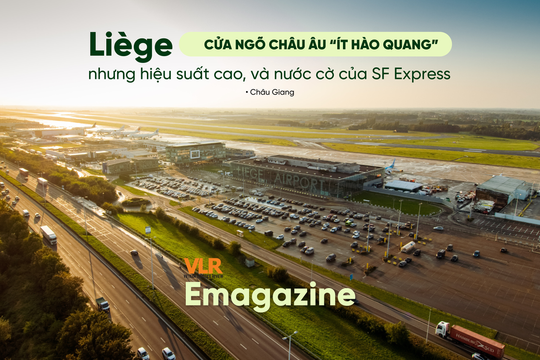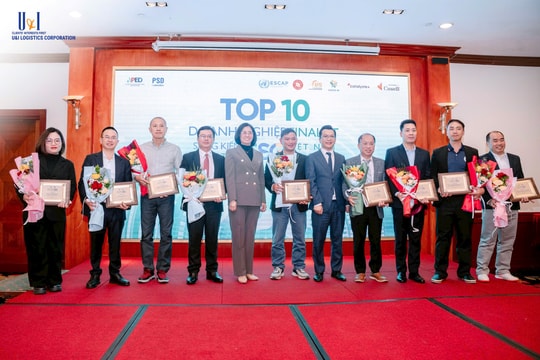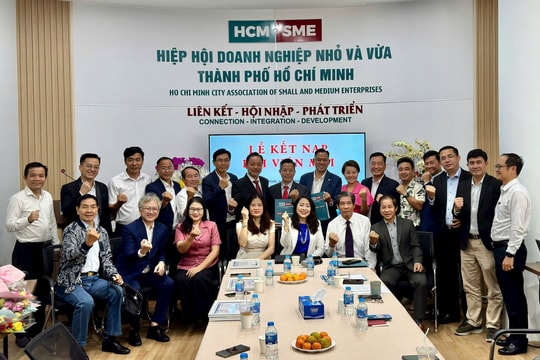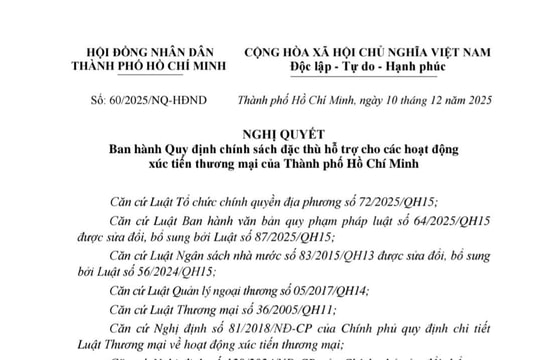As the centre of gravity of the global economy continues shifting eastwards, deliberations on emerging markets tend to be dominated by BRIC discussions and – specifically in the Asia region – much of the attention focuses on the inexorable rise of the ‘CHINDIA’ powerhouse – China and India combined.
However, south-of-China and east-of- India are some of the latest rising stars amongst emerging markets – within the ASEAN group, Vietnam is particularly interesting and exciting. In recent years, Vietnam has been one of the fastest growing economies in Asia – fuelled in part by its WTO accession and also by becoming the default “plus-one’ in manufacturers” China-plus-one diversification strategies for low-cost labourintensive outsourced production.
The country has become increasingly integrated with the world economy and is now a significant player in many global supply chain ecosystems. One of the main growth drivers has been exports to USA and European Union, which of course have suffered as the developed western world has experienced economic downturns.
Vietnam is a member of the APEC Asia Pacific Economic Cooperation, the ASEAN Association of Southeast Asian Nations and WTO, the World Trade Organisation. As part of its WTO commitments, the domestic logistics sector will become open to 100 percent foreign owned logistics companies from 2014. Leading up toward the open market next year, we are seeing increased interest in M&A activities with local logistics providers seeking opportunities to agglomerate to achieve scale and resources to compete with the multi-national giants, who are eagerly developing plans to establish wholly foreign owned subsidiaries to capitalise on the local market opportunities.
ROAD AND RAIL INFRASTRUCTURE CHALLENGES
As with many emerging and developing markets, infrastructure is one of the main challenges. The World Economic Forum reports that despite recent investments in highways, airports and seaports, Vietnam is still behind other countries in the region with regards to infrastructure quality and it is estimated that Vietnam needs at least US$300 billion for development.
Road – some two thirds of all cargo is moved by road transport, however, out of the total 200,000 km road network, most roads are two lane and only 20 percent of the total roads are paved. Domestic cargo movements are therefore inevitably fraught with inefficiencies, delays, damages and high costs. A program of road upgrades are planned by the Ministry of Transportation and the Ministry of Planning and Investment – leveraging further foreign investment and PPP (public private partnership) models wherever available. Combination of BOT model structures (build, operate, transfer) and toll road concessions are encouraging private sector participation in road infrastructure investment.
Rail – about seven percent of all freight is carried by rail. Vietnam’s geography is long and narrow – it has 2,600 km of railways but the infrastructure is outdated with all seven lines being single track. The sole supplier of all rail services in Vietnam is VRC (Vietnam Railway Cooperation), which is responsible for sector planning and development including maintenance and new construction. Even though the North- South railway is being upgraded, with no alternative lines or dual-track systems congestion at one location can halt the whole line. This wholly state-controlled market is unable to meet the growing demand – the poor quality, narrow-gauge lines limit train speed and too many railroad crossings in residential areas cause frequent accidents. Improvement plans are underway, including upgrading lines and double- tracking the Hanoi-Vinh and Sai Gon-Nha Trang lines, plus the construction of a new north-south high-speed, double track railway line – will reduce transit time between Hanoi and Ho Chi Minh City to less than ten hours.
DOMESTIC LOGISTICS SECTOR
Compared with other Asian countries and territories, Vietnam’s logistics sector is still at an early stage of development – but within an environment of rapid economic growth, especially in manufacturing and retail.
Logistics costs in Vietnam represent around 25 percent of GDP – higher than China or India and reflecting the many inefficiencies in the domestic market. There are estimated to be 1,200 logistics service provider companies operating in Vietnam, with the vast majority (800-900) of logistics businesses being located in the commercial capital of Ho Chi Minh City. Local logistics providers will face strong competition in 2014 when foreign owned entities will be allowed to open wholly-invested subsidiaries in the local market. As in many developing markets, the international logistics providers tend to have to deploy networks of local sub-contractors in order to provide service across the country.
Ho Chi Minh City remains the focal point for the logistics and freight industry with an estimated 80 percent of all goods moving though this major commercial hub in south Vietnam. Therefore, the vast majority of logistics providers – both domestic and foreign – have established a presence in Ho Chi Minh City, in order to cater to the growing needs of the exciting and dynamic market of Vietnam.
(*) Mark Millar- Chairman of International Relations Committee, Hong Kong Logistics Asscociation. Mark Millar leverages 25 years of global business experience to provide Consulting, Education, and Recruitment services that create value for clients by empowering performance improvements in their supply chain ecosystems. Acknowledged as an industry thought leader, clients have engaged Mark as Keynote Speaker, Conference Chairman, Master of Ceremonies or Moderator at more than 220 events in 20 countries and his articles on global supply chain trends and logistics industry developments are regularly published in five languages. He achieved an MBA with Distinction from the University of the West of England, is a Graduate of the UK Chartered Institute of Marketing and holds a post graduate Diploma in Management Studies. |




.png)




.png)
.png)

.png)



.png)